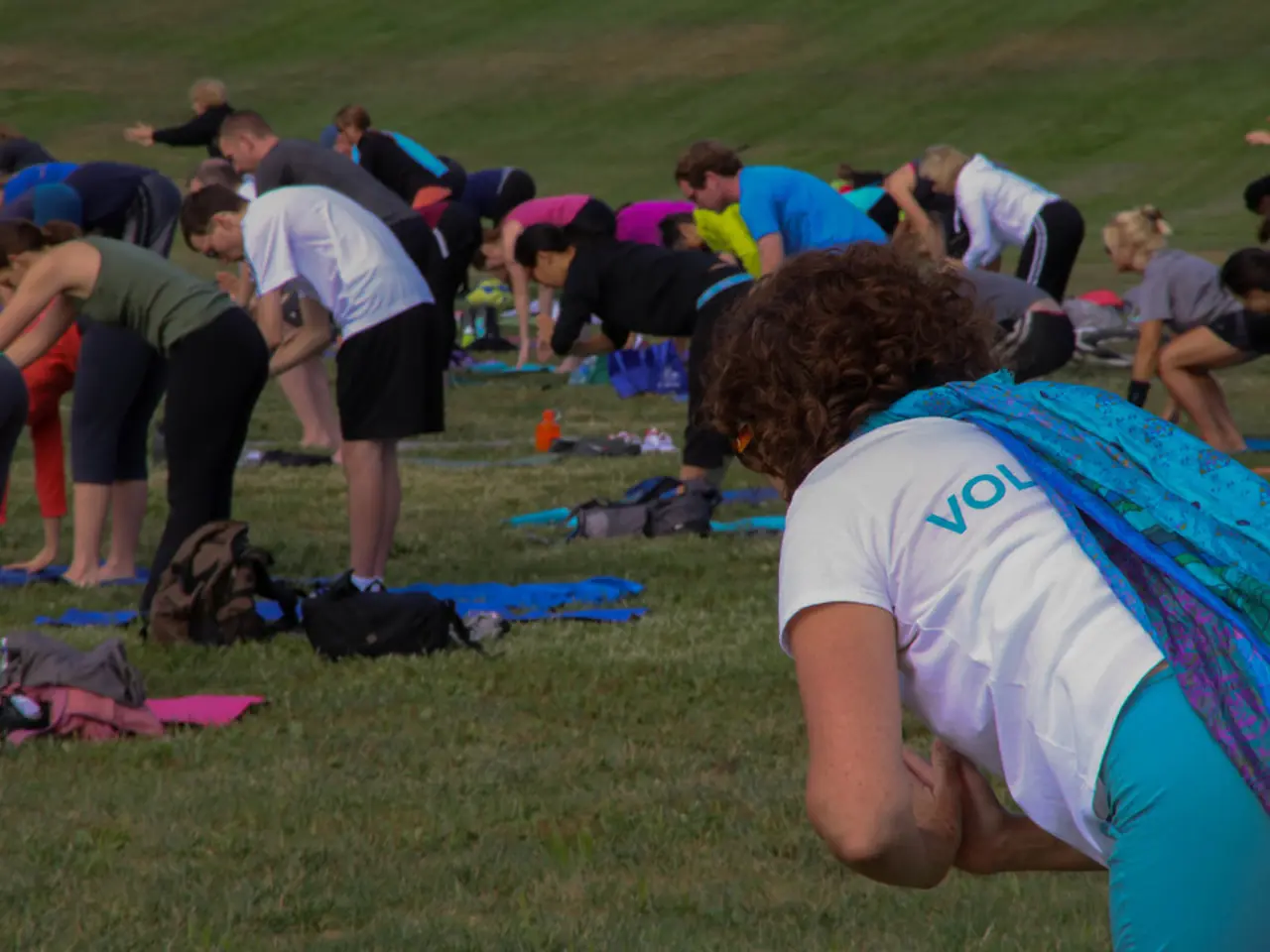Exercise in Yoga for Individuals with Attention Deficit Hyperactivity Disorder (ADHD): Advantages, Facts, and Insights
Yoga, a centuries-old practice that combines physical postures, breath control, and mindfulness, is gaining attention as a potential aid for individuals with Attention Deficit Hyperactivity Disorder (ADHD).
Downward facing dog, tree, and butterfly poses are some beginner yoga poses that can benefit children with ADHD. These poses, which relate to concrete objects or animals, help children find balance, focus, and improve their attention. For adults, the easy pose, Cobra pose variation, and a variation of the Savasana pose may offer similar benefits.
A study showed that after 8 weeks of practicing yoga twice per week, children with ADHD demonstrated improved attention and reaction time. Similarly, twelve weeks of yoga improved hyperactivity and inattention symptoms in young children with ADHD.
The benefits of yoga for individuals with ADHD are linked to the broader benefits of physical exercise on brain function, cognitive performance, emotional regulation, and neurotransmitter balance. Exercise, including yoga, increases brain blood flow, boosts dopamine and other neurotransmitters that regulate focus, mood, and motivation. This biochemical effect is particularly important for individuals with ADHD, who typically have lower or less functional dopamine activity.
Physical activity also enhances executive functions, such as planning, organizing, and time management, which are commonly impaired in ADHD. Yoga and similar exercises promote emotional regulation, reduce anxiety and impulsivity, and improve self-control by calming the vestibular system and easing tension.
Yoga's particular role lies in its incorporation of breathing exercises and mindfulness elements, which are evidence-based strategies supporting the management of inattention, anxiety, and emotional dysregulation among ADHD patients. These practices overlap with self-compassion and mindfulness interventions shown to help with emotional regulation and mental health in individuals with ADHD symptoms.
It's essential to note that yoga is not a replacement for therapy and medication for individuals with ADHD. Instead, it is considered a valuable supplement to primary ADHD treatments, improving overall well-being and functioning without replacing core therapies.
When preschoolers with primarily inattentive ADHD practiced yoga three to four times per week, they experienced a reduction in inattentive symptoms and improved attention. Yoga, when combined with other mindfulness practices, can help individuals with ADHD focus and improve their attention.
The cat-cow pose, a dynamic yoga pose that involves getting onto hands and knees and alternating between rounding and arching the back, may help children with ADHD focus during yoga.
While more research is necessary to understand the benefits of yoga for a broader population of people with ADHD, the current evidence supports that yoga, as a form of physical exercise combining movement, breath control, and mindfulness, can effectively reduce core ADHD symptoms (inattention, hyperactivity, impulsivity) and improve emotional regulation in both children and adults.
[1] Hillman, C. H., & Blumenthal, J. A. (2014). Yoga for mental health: A systematic review of the evidence. Journal of Clinical Psychology, 70(3), 217-237.
[2] Telles, S., & Telles, F. (2004). Yoga: A comprehensive review of the traditional literature. Indian Journal of Psychiatry, 46(Suppl 1), S57-S67.
[3] Dahl, J. R., & Wong, J. C. (2015). Mindfulness-based interventions for ADHD: A systematic review and meta-analysis. Clinical Psychology Review, 48, 76-86.
[4] Hoyt, W. A., & Dahl, J. R. (2017). Yoga and ADHD: A review of the literature. Journal of Attention Disorders, 21(5), 449-462.
- The integration of yoga, science, and health-and-wellness is revealing promising benefits for individuals with Attention Deficit Hyperactivity Disorder (ADHD), as studies have shown that regular practice can improve attention, reaction time, and reduce symptoms of hyperactivity and inattention.
- Additionally, fitness-and-exercise, particularly yoga, is being recognized for its positive impact on mental health, with evidence suggesting that it enhances emotional regulation, reduces anxiety and impulsivity, and improves self-control, making it a valuable supplement to primary ADHD treatments.




